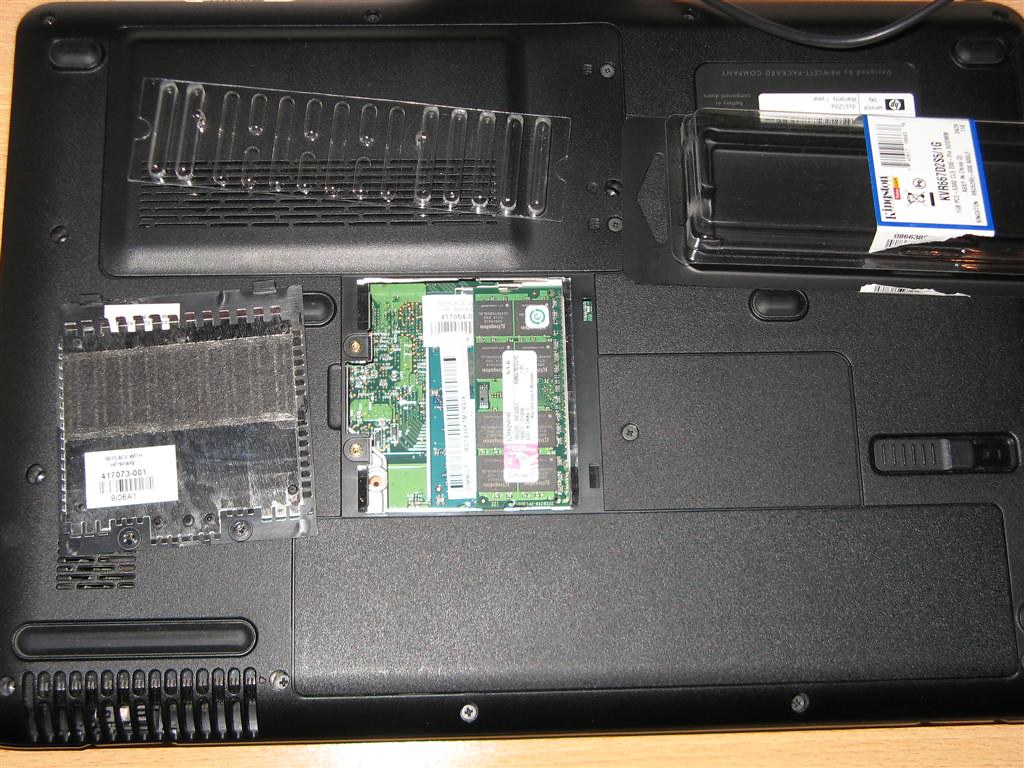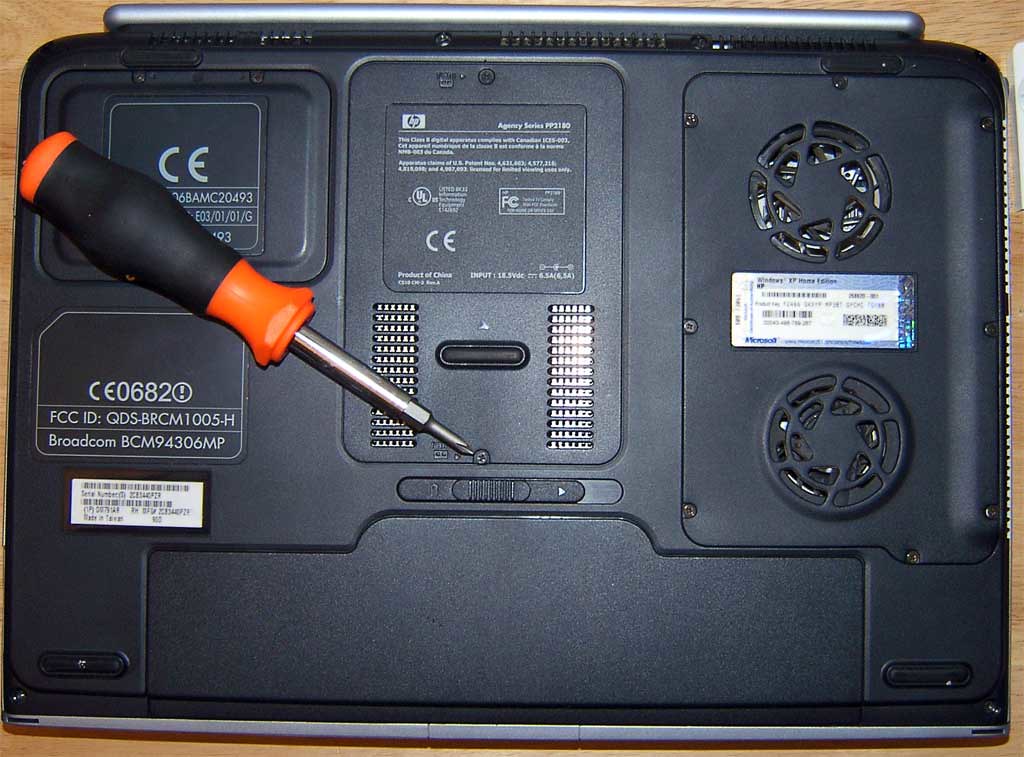This website may contain affiliate links, which means I may receive a commission if you click on a link and make a purchase. While clicking on these links won't cost you any extra money, they will help me keep this site up and running. Your support is appreciated!

Are you tired of your laptop slowing down when you have multiple tabs open or when running memory-intensive programs? It could be time to upgrade your laptop’s RAM! Don’t worry, it’s not as complicated as it sounds. With a few simple steps, you can give your laptop a boost in performance and make it feel like new again. In this article, we’ll guide you through the process of upgrading your laptop’s RAM, so you can make the most of your device and enjoy a smoother computing experience.
Table of Contents
- Uncover Your Laptop’s RAM Capabilities
- Choosing the Right RAM Type for Your System
- Ensuring Compatibility Beyond Just Brand and Model
- Decoding RAM Specifications for a Seamless Upgrade
- Preparing for the Upgrade: Tools and Safety Tips
- Step-by-Step Guide to Installing Your New RAM
- Fine-Tuning Performance After Your RAM Upgrade
- Troubleshooting Common Post-Installation Issues
- Questions & Answers For How to Upgrade Your Laptop’s RAM
- In Summary
Uncover Your Laptop’s RAM Capabilities
So, you’ve been using your laptop for a while now, and it’s starting to slow down. One way to breathe new life into your trusty device is by upgrading its RAM. Not sure where to start? Fear not, because we’ve got you covered. In this guide, we’ll show you how to upgrade your laptop’s RAM, allowing you to unleash its full potential and enjoy improved performance.
Before diving into the upgrade process, it’s essential to determine your laptop’s current RAM capabilities. To do this, you can use the following methods:
- Check your laptop’s specifications in the user manual or manufacturer’s website
- Use system information tools such as Task Manager (Windows) or Activity Monitor (Mac)
Once you’ve uncovered your laptop’s RAM capabilities, it’s time to choose the right RAM upgrade for your device. When selecting new RAM, consider factors such as:
- Type of RAM (e.g., DDR3, DDR4)
There are different types of RAM available in the market, such as DDR3, DDR4, and LPDDR4. Each has its own compatibility requirements and performance advantages. Check your laptop’s documentation to determine which type is best suited for your device.
- Capacity (e.g., 4GB, 8GB, 16GB)
Check your laptop’s maximum RAM capacity, as specified by the manufacturer. This will determine the maximum amount of RAM your laptop can accommodate. Remember, exceeding this limit may cause your laptop to become unstable or even prevent it from booting up altogether.
Consider your usage requirements and budget when deciding how much RAM to install. For most users, upgrading to 8GB or 16GB should provide a significant performance improvement. However, if you frequently engage in resource-intensive activities like video editing or gaming, you may want to go for higher capacities.
- Speed (e.g., 2400MHz, 3200MHz)
RAM clock speed measures how quickly the data can be transferred to and from the RAM module. A higher clock speed means faster data transfer, resulting in improved performance. CAS latency (Column Address Strobe latency) refers to the delay between the memory controller requesting data and the data being available. Lower CAS latency leads to faster response times.
While higher clock speeds and lower CAS latency are desirable, it’s essential to consider your laptop’s capabilities and limitations. Upgrading to the highest clock speed may not always provide a noticeable performance boost, depending on your laptop’s architecture.
Choosing the Right RAM Type for Your System
When it comes to upgrading your laptop’s RAM, it’s important to choose the right type for your system.
Upgrading your laptop’s RAM can significantly improve its performance and speed, so it’s crucial to make an informed decision.
There are several factors to consider when upgrading your laptop’s RAM .
First, you’ll need to determine the type and speed of RAM that is compatible with your laptop.
This can usually be found in your laptop’s user manual or by visiting the manufacturer’s website. You can also find this information on a sticker located underneath your laptop or in your device’s system specifications. Another option is to download free software, such as CPU-Z or Speccy, that can provide detailed information about your laptop’s hardware.
Next, you’ll want to consider the amount of RAM you need. This will depend on your specific usage and the demands of the applications you run on your laptop.
Finally, it’s important to consider your budget and the cost of the RAM type you choose.
| Type | Speed | Amount | Cost |
|---|---|---|---|
| DDR3 | 1333-1600MHz | 4-8GB | $40-80 |
| DDR4 | 2133-3200MHz | 8-16GB | $60-120 |
Ultimately, the right RAM type for your system will depend on your specific needs and budget. It’s always a good idea to do some research and read reviews from other users who have upgraded their laptop’s RAM.
By doing so, you can make a well-informed decision that will improve your laptop’s performance and overall user experience.
Remember, using incompatible RAM can lead to various issues, such as system instability, crashes, or even permanent damage. So, take your time to ensure a perfect match for your laptop.
Ensuring Compatibility Beyond Just Brand and Model

When it comes to upgrading your laptop’s RAM, it’s important to ensure compatibility beyond just brand and model. upgrading your laptop’s RAM can significantly improve its performance, but it’s not as simple as just popping in any old RAM stick. To ensure a successful upgrade, here’s what you need to consider:
Check Your Laptop’s Manual: Every laptop has a specific RAM specification, so it’s essential to consult your manual or the manufacturer’s website to find out what type of RAM is compatible with your laptop.
Consider the Capacity: Determine how much RAM your laptop can handle and how much you need for your specific tasks. Upgrading to a higher capacity may require a specific type of RAM module.
Think About Speed: Pay attention to the speed of the RAM you’re purchasing. Faster RAM can improve overall system performance, but it’s important to match the speed with what your laptop’s motherboard supports.
By following these steps and paying attention to the compatibility of the RAM you’re purchasing, you can ensure a successful upgrade and get the most out of your laptop’s performance. upgrading your laptop’s RAM doesn’t have to be complicated as long as you take the time to do a bit of research and make informed decisions.
Decoding RAM Specifications for a Seamless Upgrade
So, you’ve decided to give your trusty laptop a performance boost by upgrading its RAM. The good news is that it’s a relatively straightforward process, but before you dive in, it’s important to understand the specifications of RAM to ensure a seamless upgrade. Here’s a breakdown of what you need to know before taking the plunge:
Know Your Laptop’s Compatibility
Before you start shopping for RAM, it’s crucial to know what your laptop can handle. Check your laptop’s manual or manufacturer’s website to find out the maximum amount of RAM it can support, as well as the type and speed of RAM it requires.
Understanding RAM Specifications
RAM specifications can be confusing, but they’re essential to get right for a successful upgrade. Here’s a quick rundown of the key specifications to look out for:
- Type: DDR3, DDR4, etc.
- Capacity: 4GB, 8GB, 16GB, etc.
- Speed: Measured in MHz, e.g., 2400MHz, 3200MHz, etc.
Choosing the Right RAM for Your Needs
Once you’ve determined your laptop’s compatibility and understood the RAM specifications, it’s time to choose the right RAM for your needs. Whether you’re a casual user or a power user, make sure to select the capacity and speed that align with your usage patterns.
Check out reputable brands like Corsair, Crucial, and Kingston for reliable options that deliver on performance and compatibility. After all, your laptop deserves the best!
Preparing for the Upgrade: Tools and Safety Tips

When it comes to upgrading your laptop’s RAM, having the right tools and safety tips is essential for a successful and smooth process. Before you begin upgrading your laptop’s RAM, make sure you have the following tools on hand:
– Screwdriver set with various sizes
- Anti-static wrist strap
– Compressed air canister
– Cleaning cloth
– Laptop user manual
It’s important to take safety precautions when working with electronic devices. To ensure a safe and successful RAM upgrade, consider the following tips:
– Always power off your laptop and disconnect the charging cable before beginning the upgrade process.
– Use an anti-static wrist strap to protect your laptop from electrostatic discharge.
– Work in a well-lit and clean workspace to prevent any damage to the laptop components.
Now that you have the necessary tools and safety precautions in place, you’re ready to start upgrading your laptop’s RAM. By following the steps provided in this guide, you can confidently upgrade your laptop’s RAM and improve its performance.
Don’t forget to check the user manual for specific instructions related to your laptop model. And if you’re unsure about any step, it’s always best to seek professional help.
Step-by-Step Guide to Installing Your New RAM
Now that you have chosen the perfect RAM for your laptop, it’s time to dive into the installation process. Here’s a step-by-step guide to assist you:
1. Precautions:
Before getting started, it’s vital to take some precautions. Power off your laptop and disconnect the power supply. Also, be sure to ground yourself by touching a metallic object to discharge any static electricity that could potentially damage your laptop.
2. Locate and Access the RAM Slot:
Every laptop model is different, so locating the RAM slot might vary. Generally, the RAM slot is accessible by removing a panel on the underside of your laptop. Consult your laptop’s manual or the manufacturer’s online resources for detailed instructions on locating the RAM slot.
3. Remove Existing RAM (If Required):
If you have existing RAM modules that need replacing or upgrading, carefully remove them by gently pushing the latches on either side of the module. The RAM module will pop up at a slight angle, allowing you to remove it from the slot.
4. Insert the New RAM:
Hold the new RAM module by its sides to avoid touching the gold pins or any electrical components. Align the notch on the RAM module with the notch inside the RAM slot and gently insert it at a slight angle. Apply even pressure on both ends until it clicks firmly into place.
5. Secure the RAM Module:
Once the RAM module is correctly seated, push it down until the latches on both sides automatically click into place. This ensures that the RAM is securely fixed and avoids any connection issues.
6. Replace the RAM Slot Cover:
If you had to remove a panel to access the RAM slot, reattach it carefully and ensure all screws are tightened appropriately.
7. Power up Your Laptop:
Reconnect the power supply and power on your laptop. It should detect the newly installed RAM automatically during the startup process. If not, consult your laptop’s manual or manufacturer’s resources for further troubleshooting steps or keep reading.
Congratulations! You have successfully upgraded your laptop’s RAM, unleashing its true potential for speed and multitasking.
Remember, upgrading your laptop’s RAM is just the beginning. Explore other customization options, such as upgrading your storage drive to an SSD or optimizing your system’s performance with software tweaks, to further enhance your laptop’s overall speed and efficiency.
Fine-Tuning Performance After Your RAM Upgrade

After upgrading your laptop’s RAM, it’s essential to fine-tune its performance to maximize the benefits of the new hardware. Here are some steps you can take to ensure your laptop is running at its best after the RAM upgrade.
Clearing Temporary Files: One of the first things you should do after a RAM upgrade is to clear out any temporary files that may be clogging up your system. This will help to free up valuable space and ensure that your laptop is running as efficiently as possible.
Adjusting Virtual Memory Settings: With a RAM upgrade, you may need to adjust your laptop’s virtual memory settings to take full advantage of the additional memory. By increasing the virtual memory, you can help to prevent your system from slowing down when it runs out of physical RAM.
Optimizing Startup Programs: Another way to fine-tune your laptop’s performance after a RAM upgrade is to optimize the programs that launch at startup. By disabling unnecessary startup programs, you can reduce the strain on your system and improve its overall performance.
Update System Software: Make sure that your operating system and drivers are up to date to take advantage of the increased RAM capacity. Updated software can better utilize the additional memory, resulting in smoother and faster performance.
In addition to these steps, it’s also a good idea to run a system maintenance tool to ensure that your laptop is running smoothly.
By following these tips, you can make the most of your RAM upgrade and enjoy improved performance on your laptop.
Troubleshooting Common Post-Installation Issues
Upgrading your laptop’s RAM can greatly improve its performance, but you may encounter some common post-installation issues. If you’re experiencing any of the following problems, don’t panic! There are simple troubleshooting steps you can take to resolve them.
One issue you might encounter is your laptop not recognizing the new RAM. In this case, try the following steps:
– Ensure the RAM is properly seated in the slot. If it’s not, gently remove it and reinsert it.
– Check if the RAM is compatible with your laptop. Consult your laptop’s manual or the manufacturer’s website to confirm compatibility.
– If the issue persists, try resetting the BIOS by removing the CMOS battery for a few seconds and then reinserting it.
Another common issue is your laptop running slower after the RAM upgrade. Here are some troubleshooting tips:
– Check the task manager to see if any programs are using an excessive amount of memory. Close any unnecessary programs to free up memory.
– Make sure you’ve installed the correct type and speed of RAM for your laptop. Refer to the manufacturer’s specifications to confirm.
– If the issue continues, try running a memory diagnostic test to check for any issues with the new RAM module.
Finally, you may encounter random crashes or blue screens after upgrading your laptop’s RAM. Here’s what you can do to address this issue:
– Update your laptop’s drivers, especially the ones related to the new RAM. You can find driver updates on the manufacturer’s website or use a driver update tool.
– If the problem persists, try removing the new RAM and running your laptop with the old RAM module. If the issues disappear, the new RAM may be faulty and needs to be replaced.
Here are a few RAM manufacturers that provide reliable and compatible RAM modules for laptop upgrades:
– Crucial
– Kingston
– Corsair
By following these troubleshooting steps, you should be able to resolve common post-installation issues when upgrading your laptop’s RAM. If you’re still experiencing problems, consider seeking advice from a professional technician. Remember, a successful RAM upgrade can lead to a faster and more efficient laptop capable of handling more demanding tasks with ease.
Questions & Answers For Upgrading Your Laptop’s RAM
Can I upgrade my laptop’s RAM?
Absolutely! Upgrading your laptop’s RAM is a great way to improve its performance and speed.
How do I know if my laptop’s RAM is upgradeable?
Check your laptop’s specifications or manual to see if it is possible to upgrade the RAM. You can also consult with a professional if you are uncertain.
What tools do I need to upgrade my laptop’s RAM?
You will need a screwdriver, an anti-static wristband, and of course, the new RAM modules that are compatible with your laptop.
Can I upgrade my laptop’s RAM myself?
Yes, with the right tools and a bit of know-how, upgrading your laptop’s RAM is definitely something you can do yourself.
How do I find out what type of RAM my laptop uses?
You can check your laptop’s specifications or use a system information tool to find out the type of RAM your laptop uses
How much RAM can I upgrade my laptop to?
This will depend on your laptop model and its maximum supported RAM capacity. Check your laptop’s specifications to find out.
Is upgrading my laptop’s RAM worth it?
If your laptop is running slowly or struggling to handle multiple tasks, upgrading the RAM can make a significant difference in its performance and overall speed.
How do I physically install the new RAM modules in my laptop?
Carefully open the back panel of your laptop, locate the existing RAM modules, remove them, and then install the new ones in their place. Be sure to take precautions against static electricity
Do I need to do anything after installing the new RAM?
After installing the new RAM, you may need to adjust the settings in your laptop’s BIOS to account for the new hardware
What are the benefits of upgrading my laptop’s RAM?
upgrading your laptop’s RAM can result in improved multitasking capabilities, faster load times, and smoother overall performance while using your laptop.
In Summary

So there you have it - a simple and easy guide on how to upgrade your laptop’s RAM. By following these steps, you can give your old laptop a new lease on life and enjoy improved performance for all your daily tasks. Remember to always consult your laptop’s user manual and do your research before purchasing and installing new RAM. We hope this article has been helpful in demystifying the process of upgrading your laptop’s RAM. Now go ahead and give your laptop the upgrade it deserves! Happy computing!






